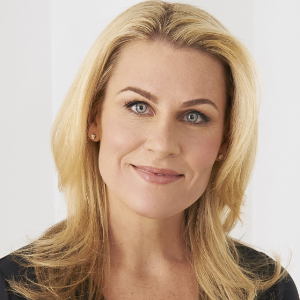Want more insights in your inbox?
Subscribe to our monthly newsletter.
Subscribe to our monthly newsletter.


Travis Freeman, Global Head of Media for Uber, and Jamie Power, COO of Advanced TV, Cadent, recently took part in a Brand Innovators Livecast Series, and their discussion touched upon several important aspects of marketing in an age of pandemic.
Read on for five thought-provoking takeaways from their chat.
The following has been condensed and lightly edited for clarity.
Meet people wherever they’re watching content.
Jamie asserted that the current environment confirms the need for a responsive approach to marketing – simply put, brands must go where the audience is. “If this craziness has taught us anything, I think it’s that people need to work closer together and actually be more agile in their marketing,” Travis agreed. The pandemic has turned Uber’s channel mix a little bit on its head, Travis said.
The company has previously focused on digital and out-of-home advertising, but now, it has started to lean into linear in a way that it hasn’t in the past because Uber’s research shows that’s where its audience is. “They’re watching cable news, they’re watching Prime, they’re looking for a space outside of only [thinking about COVID-19] every single day, all day long.”
Our first priority is making sure that people know that if they have to go out right now and if they have to use our services, we’re doing everything in our power to make it so that it’s a completely safe environment.”
Focus on informing and providing value to consumers.
“Our first priority is making sure that people know that if they have to go out right now and if they have to use our services, we’re doing everything in our power to make it so that it’s a completely safe environment,” Travis explained. For instance, Uber is asking drivers to take a selfie before a ride starts to make sure that they’re wearing a mask.
Asked by Jamie whether a shift in messaging had been planned before the COVID-19 crisis or driven solely by it, Travis replied that both were correct. “We knew that we needed to create consistent narratives across everything that we’re doing,” he said. “We just might not have thought that we would be doing it in such an impactful way, and in such a loud way.”
Examine which KPIs are key.
Jamie looked ahead to a time when Uber could focus less on building the master brand and more on driving the actual business units. What metrics and KPIs would have the most impact on Uber’s RoAS goals as the company dives increasingly into full-funnel messaging?
“We’re starting to do a lot of work on that,” Travis explained. “Is it favorability? Is it consideration? Is it awareness? We’ve been a bit in the dark on that in the past, because a lot of it has been tied back purely to conversion lift and not necessarily correlated back to a lot of these brand KPIs. That’s the work that we’re doing now.”
Speak to specific consumer need states, and measure effectiveness, not just efficiency.
Jamie said that in this environment, it’s important to speak directly to consumers. With a medium like addressable, marketers can consider parameters like geography to make sure they’re speaking to specific audiences.
Travis agreed, adding, “At the end of the day, I’m fine to pay a CPM a bit more on the premium side than not if I know that I’m going to have the creative to speak to that different segment, and it’s going to outperform what I would be doing from a broad messaging and broad marketing perspective.” What’s important, Travis said, is ensuring that proper measurement is set up to evaluate effectiveness.
I think that’s what brands really need to do, is just act like humans and not like corporate brands.”
Preparing for a time after the crisis.
Jamie pointed out that what had happened at Uber within a very brief timeframe – the amazing pivot to connect with consumers, the drive for more thoughtful messaging – had actually helped accelerate the process of innovation. “It refocused what our priorities were, even what we were measuring,” Travis agreed. “This is a huge shift for us.”
And now, Jamie said, as the COVID-19 crisis continues, consumers are longing for a bit of normalcy—and even humor—in brand messaging. Travis agreed, adding, “I think that’s what brands really need to do, is just act like humans and not like corporate brands.”
Read more about Cadent’s mission to restore simplicity to TV and serve as trusted partners to brands, agencies and the broader TV ecosystem.
Subscribe to our monthly update to get at all the latest from Cadent.